Tire Pressure Take-Home
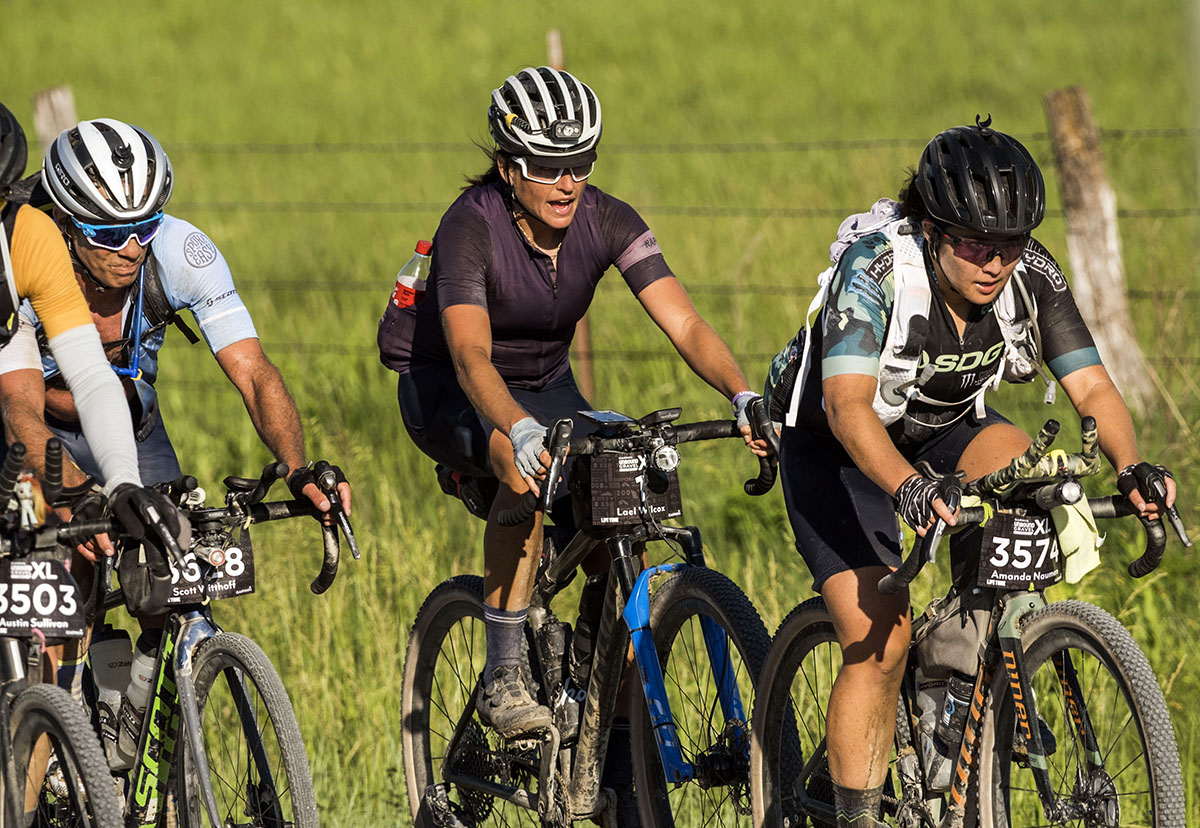
What is the ‘correct’ tire pressure for your bike? The simple answer is: Whatever feels right to you. Confused? Here is how it works:
In the past, many riders inflated their tires to the maximum pressure rating. Now most cyclists now recognize that the optimum pressure often is much lower.
But what is the right tire pressure? At Bicycle Quarterly, we’ve done a lot of research into the rolling resistance of tires at various pressures, and on various road surfaces.
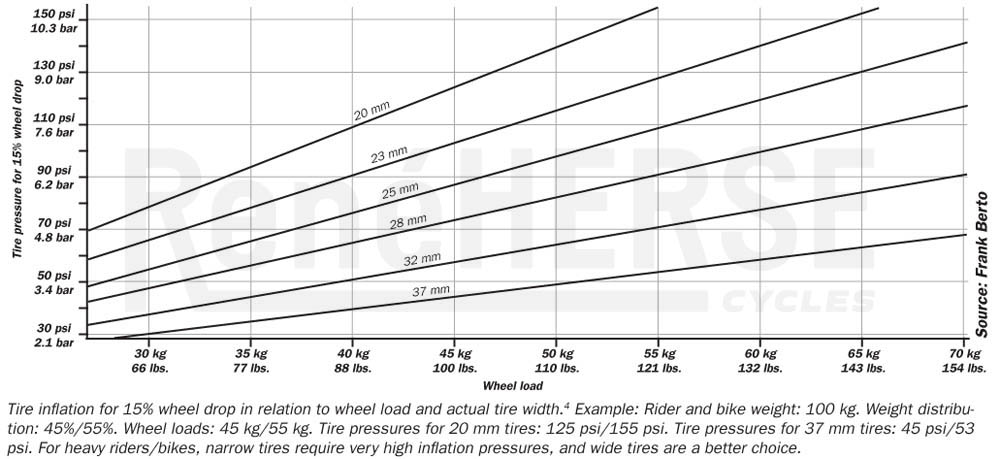
Frank Berto’s tire pressure chart (above), first published in Bicycle Quarterly many years ago, has received much attention. (Note that the weights are per wheel, not for the entire bike.)
Berto made the chart in the 1990s, when tires were much narrower. Hardly anybody today still rides on 20 mm tires, and even 23 mm are on their way out! At the other end, 37 mm no longer is huge, as many of us ride 42 mm tires on pavement, and even wider ones on gravel. How does it all translate into the modern world?
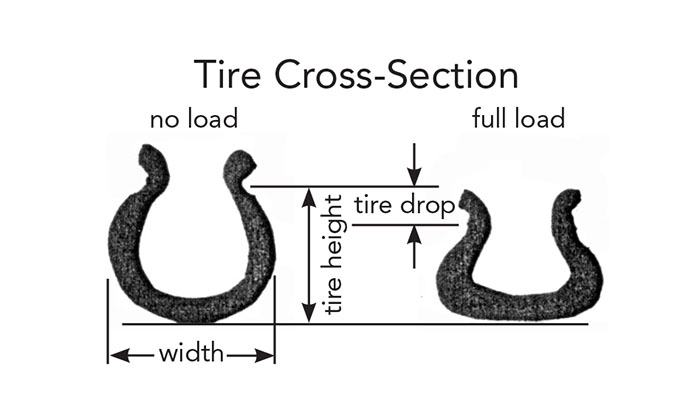
Much of it depends on the tires you run. Berto measured the tire drop (above; how much the tire deflects for a given load and pressure) for dozens of tires. He then averaged the values, and drew his chart for a tire drop of 15%.
The 15% as desirable tire drop was based on the recommendations of several tire manufacturers, but not on actual testing. So the chart shows how much you need to inflate an average 1990s tire to achieve a tire drop of 15% – nothing less and nothing more.
A few years ago, Berto sent me all his original data. Looking over his measurements, it’s clear that supple tires – back then pretty much only the Michelin Hi-Lite – deflect much more than stiff ones, at the same pressure. This means that specific tires can vary quite a bit from the averages shown in the chart.
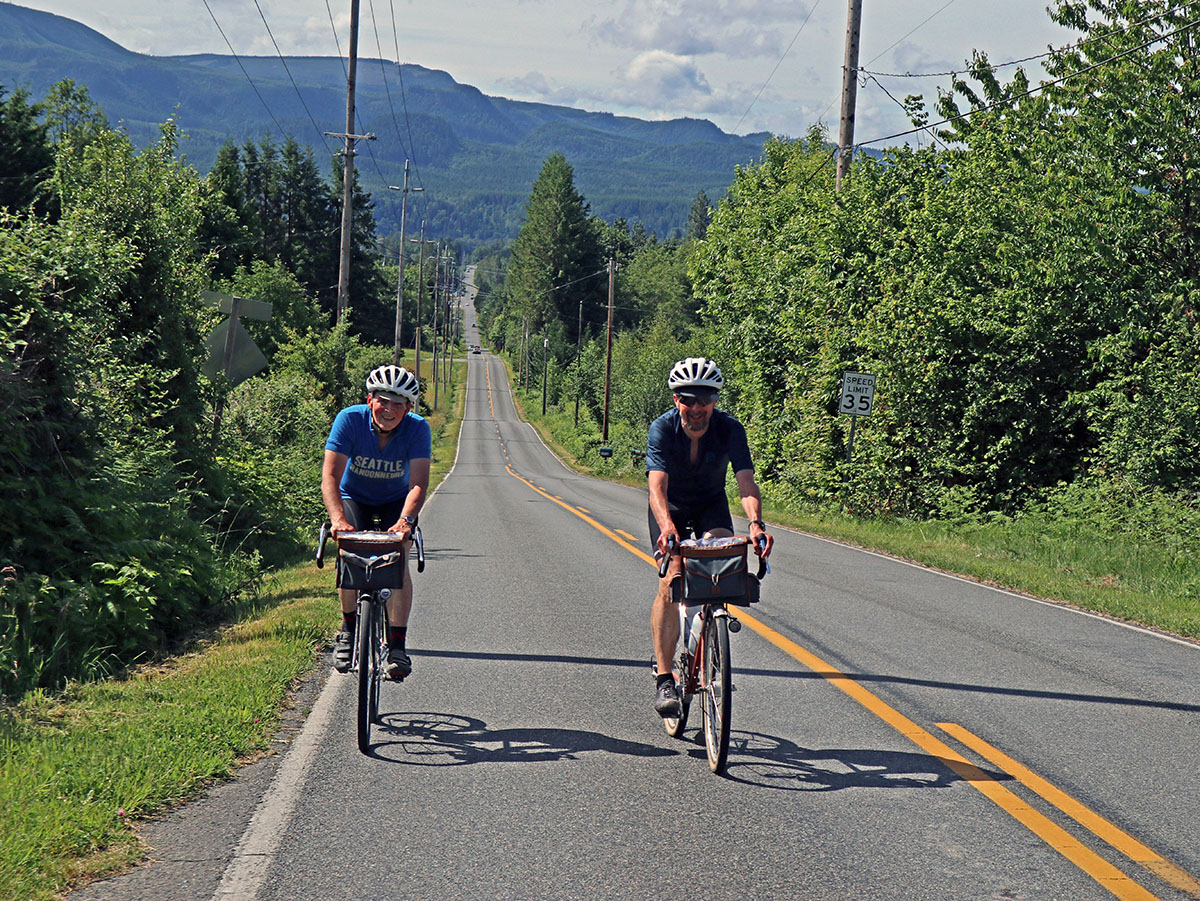
To get the same tire drop with supple tires, you would need to run them at higher pressures. But is 15% tire drop really what you want with supple tires?
The answer is “No.” The 15% tire drop is an arbitrary value. However, even if it’s only by coincidence, the values in Berto’s chart actually work quite well for Rene Herse tires – when you ride on pavement. These values result in more than 15% tire drop, but that is OK: Comfort and speed are optimized. And that is what really matters.
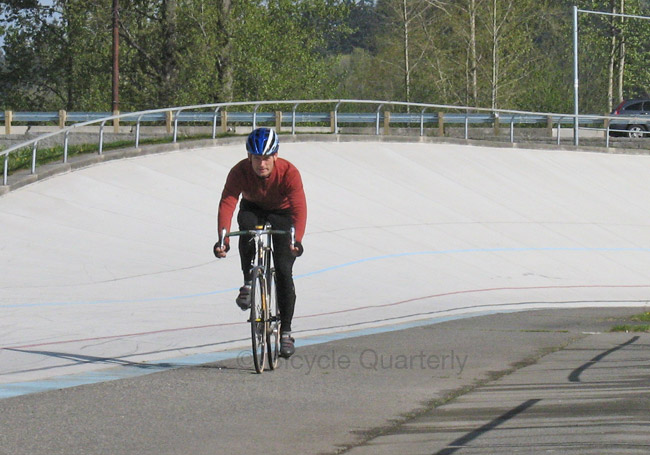
The biggest surprise of all our testing (above) was this: For supple tires, pressure makes little difference in performance. We tested three Vittoria tires (Rubino, CX clincher, CX tubular; all 25 mm wide) and found that the supple CX models roll as fast at 70 psi as they do at 130 psi. (For the rest of the world, that is 5 bar and 9 bar.)
The reason is simple: Higher pressure decreases the energy required to flex the tire. Less energy is lost due to internal deformation (hysteresis). But higher pressure increases the losses due to the vibrations of bike and rider. More energy goes to suspension losses. The two effects cancel each other. Whether you pump up your supple tires super-hard or ride them squishy-soft, they have the same resistance.
On the other hand, truly stiff tires feel sluggish at 15% tire drop. The stiff tire is much harder to flex, so it’s useful to minimize that flex by increasing the pressure. For stiff tires, the suspension losses do not vary as much with pressure – they’re always high – since the stiff casing transmits a lot of vibration at any pressure.
Recently, Velo-News confirmed our results: The performance of a hand-made tire with cotton casing did not change at different tire pressures. And a stiffer tire rolled slower at lower pressures than at higher ones. (It’s nice to see that our results, after having been highly controversial for years, now are becoming generally accepted.)
It can be hard to believe this, because higher pressure feels faster. Here is why: When you go faster, your bike hits more road irregularities per second: The road buzz increases in frequency. Most cyclists know: higher speed = higher frequency.
Higher tire pressure cheats you into thinking that you are going faster, because it also increases the frequency of the vibrations: higher pressure = higher frequency.
It’s natural to assume that this means: higher pressure = higher frequency = higher speed, but that is incorrect. Instead, you are looking at two different mechanisms that both increase the frequency of the road buzz.
Even after years of riding supple, wide tires, this ‘placebo’ effect sometimes plays tricks on me. A supple tire absorbs vibrations better, so it can feel slower – until you look at your speedometer.
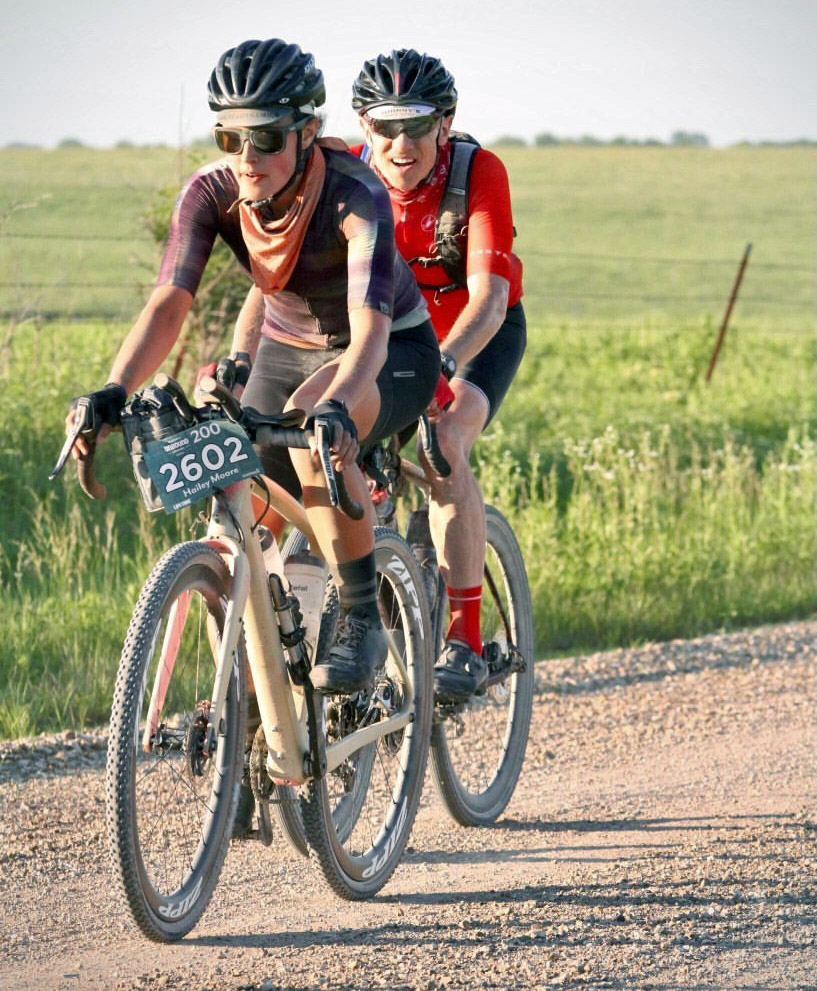
What does it all mean? Here is the take-home summary:
- Stiff casings always will be slow. They are even slower at lower pressures.
- Supple casings are fast, and pressure doesn’t matter.
- On smooth roads, tire pressure is a matter of personal preference (at least with supple tires). High and low pressures offer the same performance.
- On rough roads, lower pressures are faster. So if you want to optimize your speed on all roads, including rough ones, go with a relatively low, but safe, pressure.
- Your tire pressure needs to be high enough to avoid pinch flats. If you get pinch flats, increase your tire pressure, or better, choose wider tires. Pinch flats are rare with wide tires.
- On pavement, your pressure needs to be high enough that the tire does not collapse during hard cornering.
- The minimum safe pressure is higher for more supple casings. Stiff casings hold up the bike more, and thus require less air pressure.
- On gravel, you can run lower pressures than on pavement. On loose surfaces, the tires don’t collapse as easily, because the cornering forces are much lower.
- Don’t run your tires so low that the casing cords start to break. That happens only at very low pressures, but if you start seeing multiple lines across the casing where cords have broken, inflate the tires a bit more.
- Berto’s chart still is a good starting point. Inflate your tires to the pressures it recommends, then experiment by adding or letting out some air.
- See what feels best to you. That is the optimum tire pressure for you. At least on paved roads, you won’t go faster or slower if you change your tire pressure.
Even simpler, here is a summary in two sentences:
- Ride the tire pressure that feels good to you.
- When in doubt, let out some air.
It’s really that simple!
Further reading:
- Minimum tire pressure: How low can you go?
- What makes a tire supple? (It’s not TPI alone.)
- Bicycle Quarterly magazine
Photo credit: Jason Ebberts (Photo 1)


